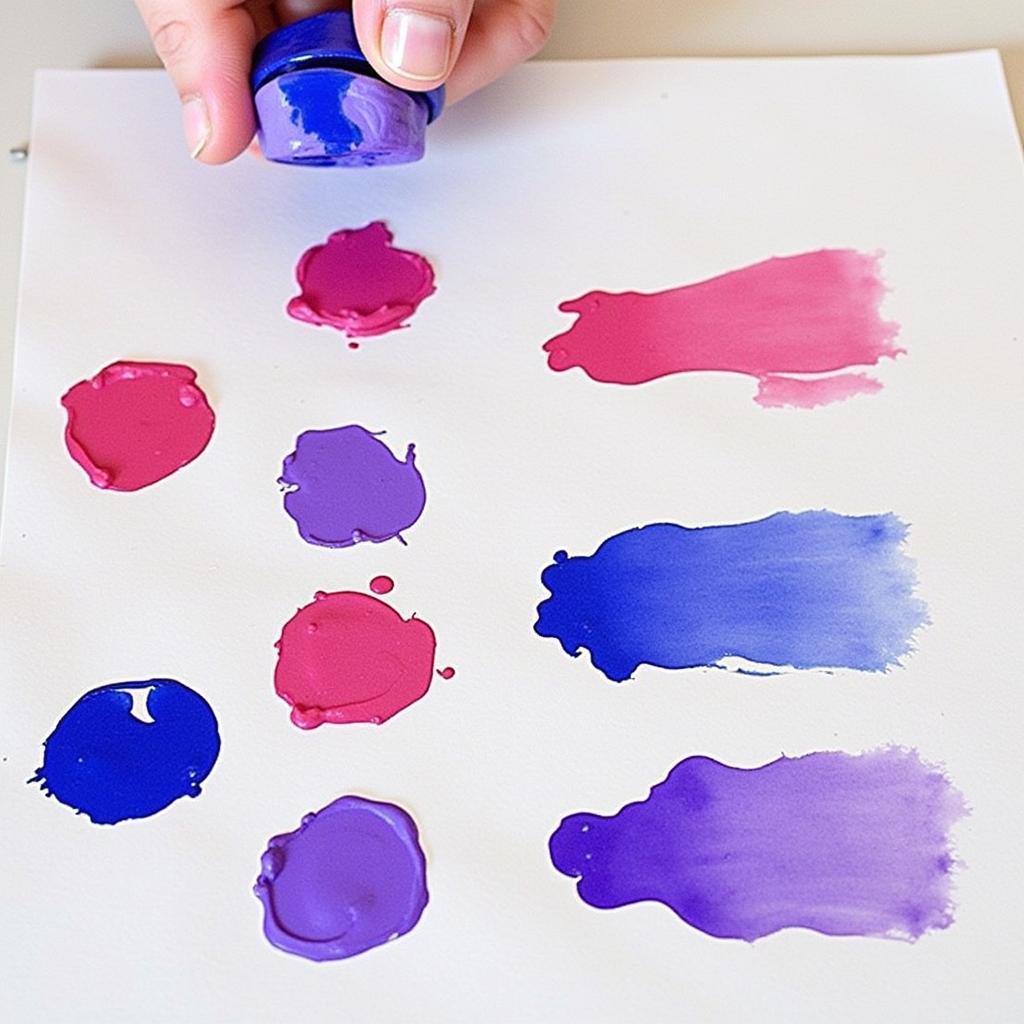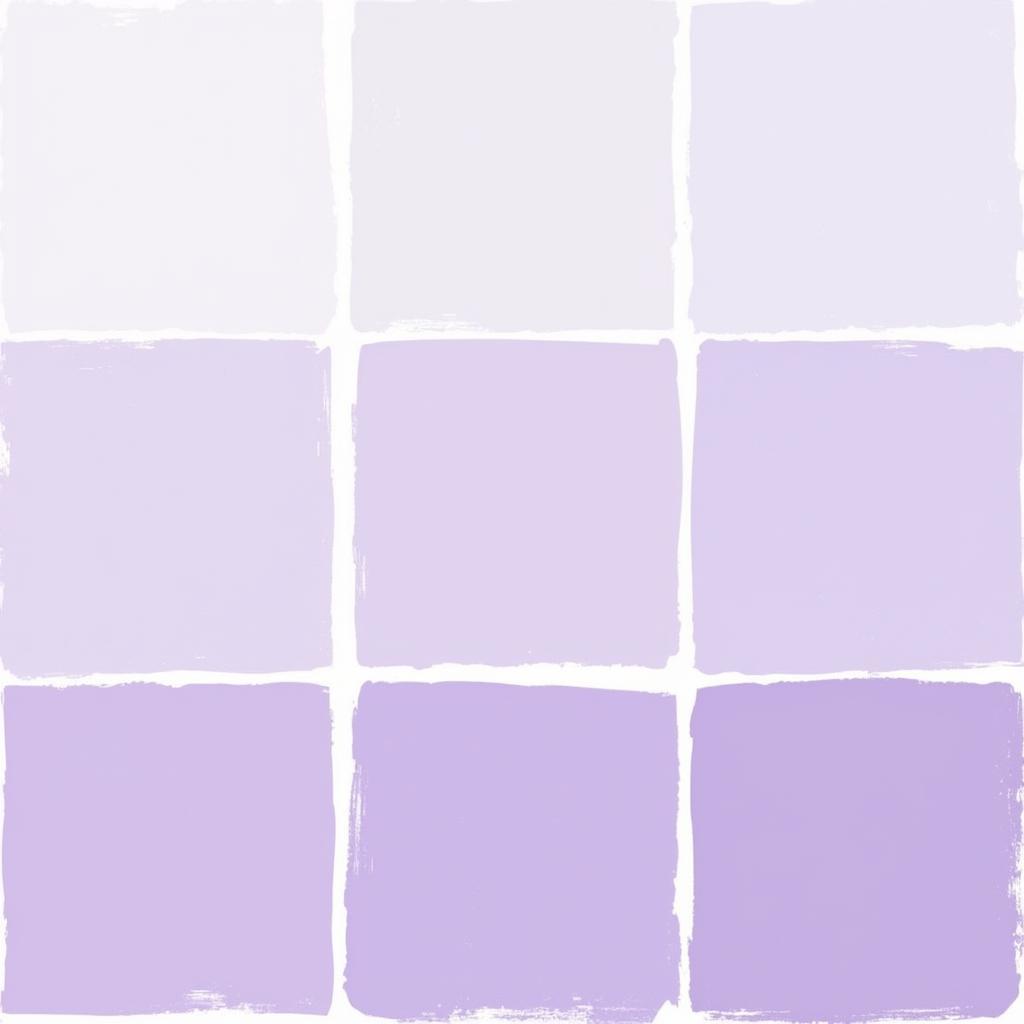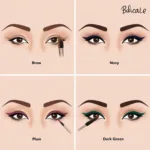Purple, a color often associated with royalty, magic, and creativity, has captivated artists and designers for centuries. But what colors do you mix to make this enchanting hue? The answer, surprisingly, is quite simple: red and blue. However, achieving the perfect purple involves understanding the nuances of color mixing, including the types of red and blue you use, and the impact of adding white or black. Let’s delve into the fascinating world of color theory and uncover the secrets to creating a spectrum of purples.
 Mixing Red and Blue to Create Purple
Mixing Red and Blue to Create Purple
Understanding the Basics of Mixing Purple
At its core, purple is a secondary color, meaning it’s created by combining two primary colors: red and blue. The exact shade of purple you achieve depends on the proportions of red and blue you use. More red will result in a warmer, reddish-purple, like magenta. More blue will lead to a cooler, bluish-purple, like violet. Think of it like a recipe – adjust the ingredients to get the flavor you desire.
Want to learn how to create the perfect purple for your next landscape painting? Check out what colors do you need for landscape painting.
Different Shades of Red and Blue
Not all reds and blues are created equal. Different shades have varying undertones, which can affect the final purple. A warm red, like crimson, mixed with a cool blue, like ultramarine, will produce a different purple than a cool red, like alizarin crimson, mixed with a warm blue, like cerulean. Experimenting with different combinations will help you discover the nuances of each shade and how they interact.
What Colors Do You Mix to Make Light Purple?
Creating lighter shades of purple involves adding white to the mix. Start with your desired red and blue combination and gradually add white until you achieve the desired lightness. Be cautious, though, as too much white can create a washed-out appearance. Small increments are key to achieving a delicate, pastel purple. Remember, choosing the right eyeshadow colors can greatly enhance your look. Learn how to coordinate colors with our guide on how to choose eyeshadow colors.
 Creating Light Purple with White
Creating Light Purple with White
Tips for Mixing Light Purple
- Start with a small amount of white and gradually add more.
- Mix thoroughly to ensure even distribution of the white pigment.
- Test the color on a scrap piece of paper before applying it to your final surface.
“When aiming for a specific shade of light purple, I always recommend starting with a lighter base of red and blue. This gives you more control over the final color and prevents it from becoming too pale,” advises renowned color specialist, Amelia Dubois.
What Colors Do You Mix to Make Dark Purple?
Dark purple can be achieved by adding black to your red and blue mixture. Similar to adding white, start with small amounts of black and gradually increase until you reach the desired darkness. Too much black can muddy the color, so be mindful of the proportions.
Are you curious about the color purple’s complementary color? Explore our informative article on what color does purple cancel out to find out.
Tips for Mixing Dark Purple
- Use a high-quality black pigment to avoid a dull or muddy result.
- Mix thoroughly to ensure even distribution of the black pigment.
- Consider using a darker shade of blue or red as your base for a richer dark purple.
“The beauty of purple lies in its versatility. From delicate lavenders to deep, regal violets, understanding the interplay of red, blue, white, and black opens up a world of possibilities,” shares color consultant, Julian Vance. For a deeper understanding of color combinations, explore our guide on what colors match with blue clothes. And if you’re fascinated by the color of morning glories, discover their vibrant hues in our article what color are morning glories.
Conclusion
Mixing the color purple is a simple yet rewarding process. By understanding the fundamentals of color theory and experimenting with different ratios of red and blue, as well as the addition of white or black, you can create a wide range of stunning purple hues. So, grab your paints and embark on a colorful journey of discovery!
FAQ
- What are the primary colors used to make purple?
- How do I make a lighter shade of purple?
- How do I make a darker shade of purple?
- What type of red and blue should I use to mix purple?
- Does the quality of paint affect the resulting purple color?
- Can I mix purple using other colors besides red and blue?
- What are some common shades of purple?
Need further assistance? Contact us at Phone Number: 0373298888, Email: [email protected] or visit us at 86 Cầu Giấy, Hà Nội. We have a 24/7 customer support team.
